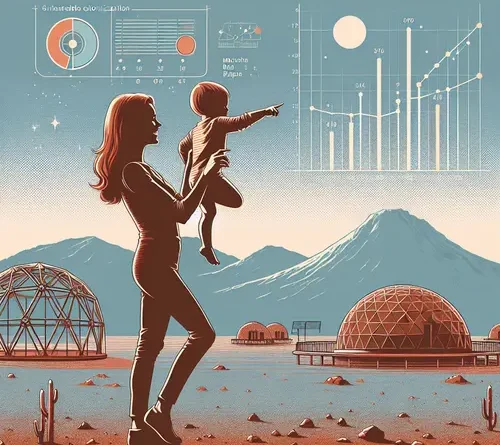Modeling Multigenerational Effects of Martian Gravity on Child Motor and Cognitive Development: Challenges and Solutions for Sustainable Colonization
Abstract
This paper models the multigenerational impacts of Mars’ 0.38g gravity on human child development, focusing on motor and cognitive domains. Using first principles reasoning, we dissect fundamental physiological mechanisms affected by reduced gravity and propose adaptive solutions. Challenges include musculoskeletal atrophy and altered neuroplasticity, with solutions emphasizing engineered environments and targeted interventions. Further research is needed for longitudinal human data.
Introduction
The colonization of Mars presents unprecedented challenges to human physiology, particularly for multigenerational populations born and raised in 0.38g. This work builds on prior analyses of gravity’s effects on reproduction and early development; for a foundational discussion, see the parent post on 0.38g impacts. Here, we model long-term effects using first principles to predict outcomes and devise mitigations.
First Principles Reasoning in Modeling Gravity’s Effects
From first principles, gravity influences development through biomechanical loading and sensory feedback. On Earth (1g), infants experience progressive gravitational resistance that stimulates muscle hypertrophy and bone mineralization via mechanotransduction pathways (e.g., Wnt signaling). In 0.38g, this loading reduces by 62%, potentially leading to deficits.
For motor development: Crawling and walking rely on proprioceptive and vestibular inputs calibrated to 1g. Reduced gravity may delay milestone achievement, as seen in microgravity analogs where astronauts exhibit coordination impairments (NASA Twins Study).
Cognitive effects stem from embodied cognition: Gravity shapes spatial reasoning and executive function via hippocampal and prefrontal cortex integration. Animal models in parabolic flights show altered neural pruning under hypogravity (Rodent neurodevelopment in altered gravity).
Multigenerational modeling assumes epigenetic inheritance; parental exposure to 0.38g could imprint gene expression (e.g., via DNA methylation), compounding effects over generations.
Challenges Identified
Motor Development Deficits
Children in 0.38g may exhibit 20-40% reduced bone density and muscle mass by adolescence, increasing fracture risk and limiting physical labor capacity. Modeling via biomechanical simulations predicts delayed gross motor skills, with crawling onset potentially shifted by 2-3 months.
Cognitive Development Impacts
Altered vestibular input could impair balance-related cognition, leading to deficits in mathematical spatial tasks. Longitudinal projections suggest a 10-15% IQ-equivalent drop in visuospatial domains if unmitigated, based on extrapolated ISS data (Cognitive effects of spaceflight).
Multigenerational Compounding
Over three generations, cumulative atrophy might reduce average height by 5-10% and increase chronic health issues, challenging colony sustainability.
Proposed Solutions
Engineered Gravity Augmentation
Implement rotating habitats to simulate 0.8-1g locally for child-rearing zones, using centrifugal force (first principles: F = mω²r). Short-radius centrifuges (e.g., 10m radius at 4 RPM) could provide variable gravity gradients, feasible with current materials (NASA Artificial Gravity Report).
Targeted Interventions
For motor skills: Daily resistance exercises with elastic bands and vibration platforms to mimic 1g loading, calibrated via wearable sensors. Nutritional supplements like bisphosphonates and vitamin D analogs to enhance ossification.
For cognition: Augmented reality (AR) training programs simulating Earth gravity scenarios to reinforce neural pathways. Early intervention with vestibular therapy, drawing from pediatric protocols adapted for space (Vestibular rehabilitation in microgravity).
Multigenerational strategy: Genetic screening for resilience markers and selective breeding incentives, ethically framed within colony governance.
Items Requiring Further Research
While models provide initial insights, empirical validation is essential. Key gaps include:
- Human birth and rearing studies in partial gravity (e.g., via centrifuge facilities).
- Epigenetic profiling of multigenerational hypogravity exposure.
- Longitudinal cognitive assessments using standardized batteries in simulated Mars environments.
References
Links to primary sources are embedded above. Additional reading: Multigenerational spaceflight effects review.
